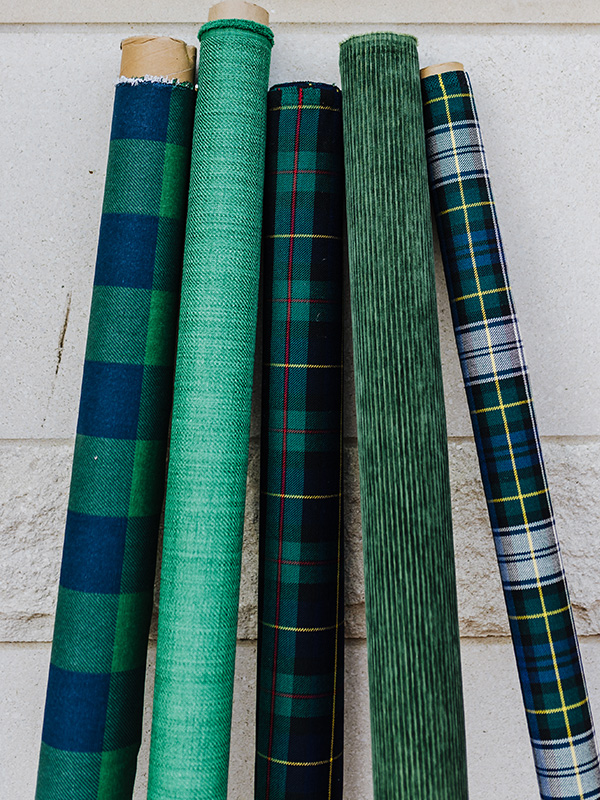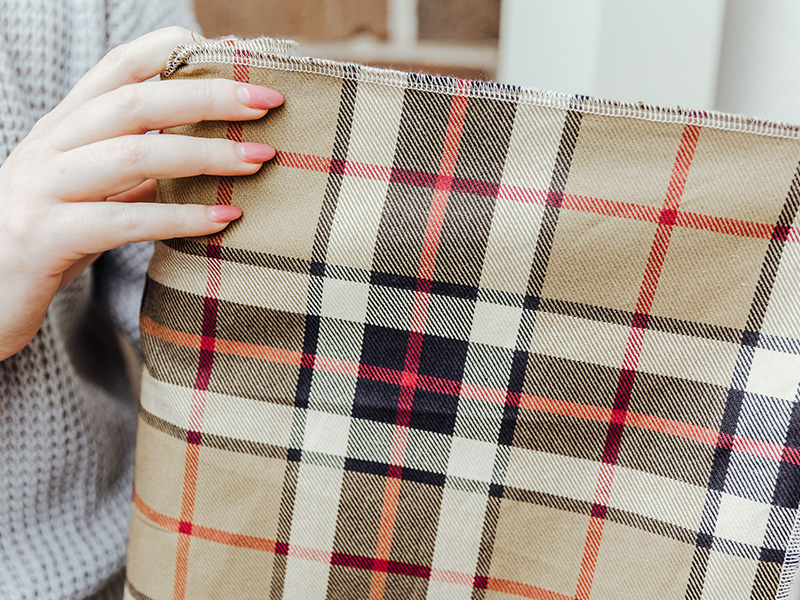While we refer to the colder months as “plaid season” thanks to the warm and homey atmosphere it creates (and the fact that is pairs so well with a crackling fireplace), it is a wonderful and stunning fabric to use year-round. Classic plaids have a traditional feel but can be modernized depending on the chosen color palette. Plaid to me is slipping on your favorite sweatshirt, cozy and comfortable and unconcerned about changing trends.
We have Scottish families living in the 1600’s to thank for popularizing the plaids (technically, “tartans”) we know and love today, who wore the patterns and colors to identify their family name and show off their heritage. The history of tartans goes much past the 1600s, in fact, as far back as the 3rd and 4th centuries AD according to The Scottish Tartans Museum and Heritage Center (read more here). We don’t know how many different patterns may have truly existed, but there are quite a few that have survived and become quite popular. Let’s dig into a couple of our favorites!
Tartan plaid is most certainly the most famous and recognizable member of what we consider today as the plaid family. This pattern is most likely the first that comes to mind when thinking of plaid since we see so many historical tartans (and variations of them) in the world today. This pattern is comprised of stripes, (both vertical and horizontal or diagonal) that cross each other to form different sized checks. While generally known today as a more casual fabric (at least here in the US), the addition of metal studs, festive tassels or elegant trim can turn this everyday beauty into a wonderfully high-brow statement for furniture and home accessories.
One of the most recognizable tartans is the Royal Stewart version that is comprised of contrasting stripes of bold red, bright yellow, blue, green and white. Another popular version is the Black Watch Tartan which is easily identified by its black, navy, and hunter green tones. Tartan is available in colors outside of this and can be recognized by its uniquely symmetrical pattern. I could go on and on about tartans but for the sake of this blog post, I will try to keep it short!
Glen plaid, named after the Glen Urquhart Valley in Scotland, is a style most commonly found in menswear and well-tailored items. This twill pattern consists groups of alternating four light and four dark stripes that cross each other to create its unique mixed pattern of houndstooth and pin checks throughout the design. This is a fabric that you will most commonly find in muted colorways, like black and light grey. We love using this pattern in larger upholstery pieces such as sofas so the small scale can be truly appreciated.
I will forever be a lover of plaid patterns of all sizes, shapes and colors. They offer so many possibilities for design and blend beautifully with patterns and solid textiles alike – which is hard to find! Which plaid (or check) is your favorite to use in your home – and where? Share with me in the comments! Until next time – happy decorating!











